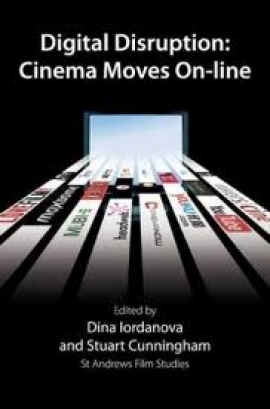
In the introduction to Digital Disruption, Dina Iordanova profiles new modes of online delivery that are significantly expanding the circulation of independent, alternative, and documentary cinema. These new platforms put filmmakers in direct contact with audiences near and far, giving them greater control over the promotion and exposure of their work, and cutting out traditional distribution companies. Audiences now have access to a wider range of films and filmmakers are gaining access to niche audiences around the world. This process of disintermediation appears to be gathering force so that “the concept of ‘distribution’ gradually dissolves,” writes Iordanova, “whilst a new concept—one of film circulation—becomes ever more viable” (6).
Digital Disruption is published by the Centre for Film Studies at the University of St. Andrews, which Iordanova founded in 2005. Initially the centre focused on the role that film festivals play as alternative distribution venues, but recently its attention has shifted to the digital dimension. Accordingly, the Centre has mustered an impressive collection of research on this little understood but increasingly influential phenomenon. Iordanova’s co-editor, Stuart Cunningham of Queensland University of Technology, contributes one of the volume’s most intriguing essays, co-authored with his colleague John Silver. In the following passage, they examine online distribution via the Internet, situating it between commercial video-on-demand (VOD) services run by traditional distributors and informal economies of circulation, such as grey market and peer-to-peer exchange.
Cunningham and Silver are specifically interested in new circulation venues that have the potential to support and stimulate alternative modes of creativity. Hailing from Australia, they are well aware of the many obstacles that Hollywood outsiders confront. For almost a century, the major US studios have clogged international distribution channels, laying claim to screen time in theaters around the world. Over the past decade, Hollywood studios have redoubled their global marketing efforts due to declining ticket sales at home. As a result, filmmakers outside the juggernaut find it difficult to finance, promote, and place their projects in cinemas. Despite this dilemma, innovative websites—such as UniversCine, AfricaFilm, and Jaman—have begun to attract the attention of non-theatrical audiences. Cunningham and Silver’s essay offers a critical overview of online providers that are carving an expanding niche for film circulation.






